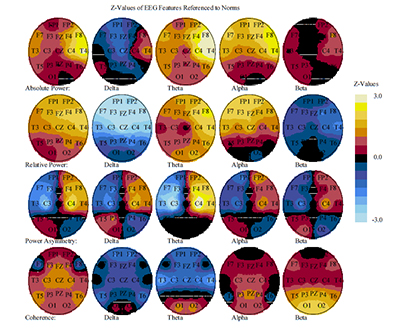Stroke Recovery Treatment Program
A Successful and Alternative Treatment for Stroke Recovery
The Scottsdale Neurofeedback Institute in Arizona has been offering a successful and alternative treatment for stroke recovery for nearly two decades. Our Stroke Recovery Program is primarily based on QEEG based EEG Neurofeedback training.
Strokes involve a disruption of blood supply and oxygen to an area of the brain sufficiently long in duration to cause damage. The brain is able to heal the damage, over time, to varying degrees depending on the severity of the damage and other factors. Unfortunately, after experiencing a stroke, there are a large range of potential problems that may persist. Most, if not all of these problems can, and have been addressed here at the Institute. Have a look at one of our recent stroke recovery success stories, a 9 year old female with history of en utero stroke due to surgery as an infant to remove a subarachnoid cyst.
Possible Treatment Interventions for Stroke Recovery
When the damage and resulting symptoms of a stroke persist, there are a variety of possible treatment interventions available, some of which are shown below;
|
|
|
|
|
|
|
Brain Mapping & QEEG Based Neurofeedback for Stroke Recovery
We specialize in QEEG based Neurofeedback. The first step in performing a QEEG topographic brain map which is painless and non-invasive is that we place a cap with 19 electrodes on the scalp which picks up the brain electricity (EEG). The recorded EEG is then processed through six normative databases including the New York University Medical School Normative Database. The statistical data will demonstrate which abnormalities are present and the degree of severity.
Below is a brain map from a 9 year old female with history of en utero stroke. For more information on this case click on Neurofeedback and Stroke Recovery Case Studies.
The above brain map shows elevated levels of Theta and Alpha activity on the right hand side of the brain. This slow wave activity correlates with reduced blood flow and metabolism, usually a result of head trauma. The slow activity is predominantly at T4, C4, and F8 and up to 3 Standard Deviations from the mean. The area C4, located above the sensorimotor cortex, is the area of the brain responsible for controlling hand movement. The young girl whom this map is from, had lost control of her left arm.
Once we know the types of slowed brain electricity, the types of disconnection and over-connection (coherence) and the abnormalities in timing (phase lag: too fast, too slow), these variables can be trained back towards normal, usually to remarkable degrees. We have seen patients regain totally lost speech, sense of smell returned, balance improved, use of arms and legs improved as brain electricity is trained towards normal. Not all respond and people respond at varying degrees but a majority make significant improvement.
